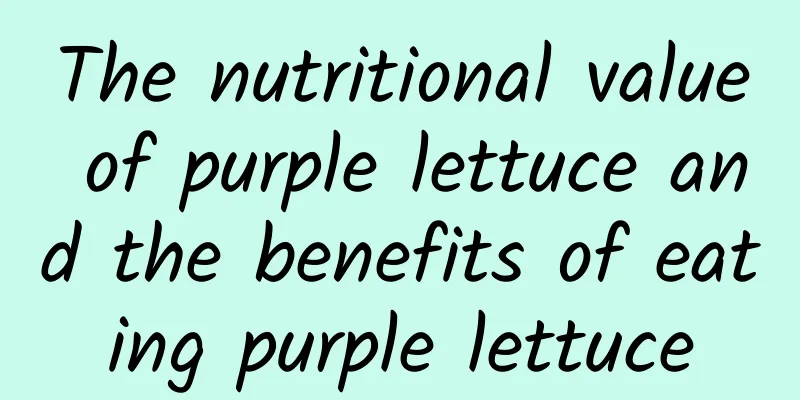Nutritional value of tomatoes

|
Everyone knows that tomatoes can beautify the skin, and tomatoes are rich in vitamins. Let’s learn about them together. Tomato IntroductionTomatoes belong to the Solanaceae family and are annual vegetables. They are native to South America and are widely cultivated in various parts of my country, with more production in summer and autumn. According to legend, tomatoes first grew in South America. Because of their bright colors, people were very wary of them and regarded them as "fox fruit", also known as wolf peaches, which were only for viewing and not for tasting. Now it is a delicacy on many people's tables. Tomatoes are rich in carotene, vitamin C and B vitamins, especially vitamin P, which is the highest among vegetables. The edible part of tomatoes is the juicy berry. There are many varieties of tomatoes. According to the shape of the fruit, they can be divided into round, oblate, oblong, and pointed round; according to the color of the peel, there are bright red, pink, orange-red, and yellow. Red tomatoes are bright red in color, generally in a slightly flattened spherical shape, with a small navel, thick flesh, sweet taste, rich juice and refreshing flavor, and have a good flavor. They can be eaten raw or cooked, and can also be processed into tomato sauce and tomato juice. Pink tomatoes are pink in color, nearly spherical, with a small navel, smooth surface, moderate sweet and sour taste, and better quality. Yellow tomatoes are orange-yellow in color, large in spherical shape, with thick flesh that is both smooth and sandy, and have a light taste when eaten raw, but are best eaten cooked. Quality requirements for tomatoes: Generally, the fruit should be round, without cracks or insect bites, moderately mature, sweet and sour, thick, and with a small ventricle. It is advisable to choose moderately mature tomatoes, which not only taste good but also have high nutritional value.Nutritional value of tomatoesTomatoes contain vitamins and minerals that have protective effects on the cardiovascular system and can reduce the incidence of heart disease. Lycopene has a unique antioxidant capacity, which can remove free radicals, protect cells, prevent DNA and genes from being damaged, and prevent the process of cancer. In addition to preventing prostate cancer, tomatoes can also effectively reduce the risk of pancreatic cancer, colorectal cancer, laryngeal cancer, oral cancer, lung cancer, breast cancer and other cancers. Vitamin C in tomatoes can quench thirst, invigorate the stomach and digest food, cool blood and soothe the liver, clear away heat and detoxify, and lower blood pressure. It has a good auxiliary therapeutic effect on patients with hypertension and kidney disease. Eating more tomatoes has anti-aging effects and keeps the skin white. Nicotinic acid can maintain the normal secretion of gastric juice, promote the formation of red blood cells, help maintain the elasticity of blood vessel walls and protect the skin. Therefore, eating tomatoes is also helpful in preventing and treating arteriosclerosis, hypertension and coronary heart disease. Tomatoes are juicy and can be diuretic, so they are also suitable for patients with nephritis. For patients who often suffer from bleeding gums or subcutaneous bleeding, eating tomatoes can help improve symptoms. The malic acid or citric acid contained in tomatoes helps gastric juice digest fat and protein.Effects of eating tomatoesTomatoes are neutral in nature, sweet, sour, and slightly cold, and enter the liver, stomach, and lung meridians; It has the effects of strengthening the stomach and digestion, clearing away heat and detoxifying, cooling blood and calming the liver, promoting body fluid and quenching thirst, nourishing blood and increasing appetite; It can cure thirst and loss of appetite.Tomato is suitable for peopleIt is edible for general population. 1. Suitable for people suffering from fever due to febrile diseases, thirst, loss of appetite, habitual gum bleeding, anemia, dizziness, palpitations, hypertension, acute and chronic hepatitis, acute and chronic nephritis, night blindness and myopia; 2. Patients with acute enteritis, bacillary dysentery and active ulcers should not eat it. |
>>: How to eat winter melon for good health
Recommend
Is it good for babies to eat spinach? How to eat spinach for babies
Nowadays, babies at home are the focus of adults&...
What is Minami Nippon Broadcasting like? Minami Nippon Broadcasting reviews and website information
What is Minami-Nippon Broadcasting Co., Ltd.? Mina...
The efficacy and function of macadamia nuts and how to eat macadamia nuts
Macadamia nuts are an important member of the nut...
How is Kyoto Bank? Kyoto Bank reviews and website information
What is the website of Bank of Kyoto? Bank of Kyot...
The benefits of eating dried ginger
Dried ginger is a very popular health snack and h...
The efficacy and function of black tea rose porridge
Everyone should be familiar with the effects and f...
The benefits of eating cornstarch
Cornstarch is a practical ingredient. Although yo...
The efficacy and function of eucalyptus essential oil
Eucalyptus essential oil is a clear liquid with s...
Is calla lily poisonous? Cultivation methods and precautions of calla lily
Calla lily is a beautiful ornamental plant. It gr...
What is the U.S. Embassy in China like? Reviews and website information of the U.S. Embassy in China
What is the website of the U.S. Embassy in China? ...
How is Popular Bookstore in Singapore? Reviews and website information of Popular Bookstore in Singapore
What is the website of Singapore Popular Bookstore...
What are the nutritional values of peaches
Peaches are seasonal fruits in summer. Many of us...
Raw beef porridge
How much do you know about raw beef porridge? Let...
The role and efficacy of boiled ginger water
Ginger is a common ingredient in life. It tastes ...
How to plant passion fruit seeds? How to plant passion fruit seeds?
Many people have eaten passion fruit with a stron...









